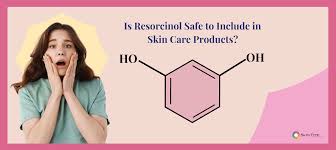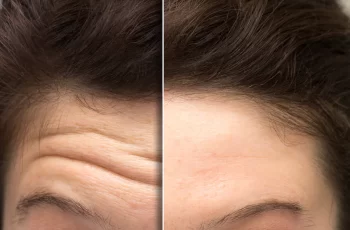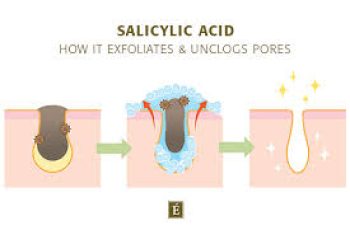Resorcinol in Skin Care
Resorcinol is a skin lightening ingredient used for acne, sun spots and other dark spots on the skin, and hyperpigmentation disorders such as melasma.
Resorcinol lightens skin by preventing the production of melanin. It is a tyrosinase inhibitor.
Common uses
Resorcinol is most commonly used to treat conditions like:
Acne
Melasma
Post Inflammatory Pigmentary Alteration (PIPA).
You can find a selection of resorcinol and related products here!
To find the best matches for your regimen, make sure to shop based on your Baumann Skin Type.
Is it safe?
Resorcinol is used in a number of skin lightening and acne products. It has been safely used by dermatologists for many years for in office peels.
It is not advised to be used during pregnancy.
There is a chance of having a skin allergy to this ingredient which can result in redness or a rash.
Irritation can occur with strong concentrations of resorcinol. This is why it is most commonly used in chemical peels by dermatologists rather than in at home products.
Irritation and allergic reactions can cause inflammation that leads to hyperpigmentation- which means- when you use resorcinol to treat melasma and another forms of pigmentation, you can worsen melasma if used incorrectly.
Concerns
Some concerns associated with regular use of resorcinol are:
Skin irritation with resulting hyperpigmentation
Possible allergic reaction
The EWG rates resorcinol as a 7. (1 is low danger while 10 is high danger on the EWC scale).
Its use in cosmetics is restricted in Japan and Canada.
resorcinol during pregnancy
Is resorcinol safe to use during pregnancy?
No, it shouldn’t be used during pregnancy.
It has been shown to be found in urine when used topically and effects on the unborn fetus are not known.
There are other ways to treat skin conditions like melasma during pregnancy.
Can it be used orally?
Resorcinol should not be used orally for skin care uses. In fact, one death in Turkey was reported. (21)
Side-effects
If you have an allergy to resorcinol, you might expect
slight rash
redness
irritation on the applied area.
If used in too great a quantity or frequency, resorcinol products may cause irritation on applied areas.
Applying products containing this ingredient outside of one’s target dark spots may result in a slight “halo” effect around dark spots.
Overuse might result in “Post Inflammatory Pigmentary Alteration” (PIPA), a darkening of the skin following prolonged inflammation.
It is important to be sure the products are being applied in the correct amounts and at the right intervals.
benefits of resorcinol
Benefits
Resorcinol is a versatile product with a number of benefits. The most common benefits associated with its use are:
Treats hyperpigmentation
Eliminates bacteria on skin
Treats sun damage
Treats Melasma
Antiaging properties
Anti-aging
Resorcinol is good for anti-aging regimens because it has notable antioxidant, anti-inflammatory, and anti-glycation properties.
Antioxidants bind free radicals that can cause genetic damage to cells. Anti-inflammatories reduce the effects of oxidative stress from the sun and pollutants like dirt. Anti-glycation properties keep your skin safe from damage caused by sugars on the skin
Acne
Resorcinol directly eliminates acne-causing bacteria and has anti-inflammatory properties that make it useful as an acne treatment.
This ingredient is commonly used in peels by dermatologists, but some commercial products are available as well.
Skin lightening
Yes, Resorcinol does lighten your skin, however the effect is slow and subtle.
It does not “bleach” skin in any quick or extreme manner, but with time can improve dark spots.
This ingredient does not pose the risk of permanently lightening darker skin tones.
It is used to lighten dark spots to match surrounding lighter pigmented skin.
If you have melanated skin and are concerned about skin bleaching, check out how to get rid of dark spots on darker skin tones.
retinol
Is it like Retinol?
Resorcinol is in a different chemical compound family than retinol but they do share some similarities, namely:
tyrosinase inhibition
skin lightening
exfoliation
Retinoids are often combined with this ingredient in chemical peels.
Both ingredients can be used together in a skin care routine, depending on your Baumann Skin Type and regimen needs.
They can be combined in the same skin care products or used as separate products in different steps of the skin care routine.
Take the Quiz
resorcinol vs retinol
Vs Hexylresorcinol.
Hexylresorcinol is a derivative of resorcinol.
Resorcinol is stronger and more likely to cause skin irritation.
Another derivative similar to both of these compounds is phenylethyl resorcinol.
Resorcinol Products
There are a variety of products on the skin care market which include phenylethyl resorcinol and hexylresorcinol, but resorcinol is found primarily in chemical peels performed in medical offices. That being said, there are some great commercially available resorcinol products as well. Here are a few of our favorites.
To find the best skin care products for your skin type- make sure you shop by your Baumann Skin Type.
DQH Knowledge drop: In your 20s, your skin cell turnover decreases. (Cell turnover is a key component in keeping your skin youthful.) You know what else slows down? Your collagen production. Starting in your 20s, collagen decreases by about 1 percent per year. Should you want to prevent fine lines and wrinkles, start by eliminating behaviors that contribute to premature aging. “If it’s bad for you, it’s bad for your skin,” says dermatologist Michel Somenek.
“Cigarette smoking reduces blood flow to the skin and causes premature wrinkling and a dull skin texture. Making the repeated pursed motion to inhale can also cause smoker’s lines. Alcohol and recreational drugs are toxins for the skin that damage its cellular structure and DNA,” Somenek tells us. “The faster you eliminate vices while you are young, the better chance your skin and body have to recuperate.” Also, adopting an anti-aging routine in your 20s is key. After all, the best offense is a good defense. We spoke to Somenek and experts Joshua Ross and Audrey Kunin to find out more.
Keep reading for the best anti-aging products for your 20s, according to skincare professionals.
Sunscreen
“We all know that the sun is the number one cause of skin aging and starting the prevention in your 20s is very important,” Ross says. “The majority of your sun damage won’t start to appear until you’re in your 30s, so don’t wait until you see it surface or you’ll be behind the curve. Stay ahead of it with a good-quality zinc-based sunscreen worn daily.”
Farmacy Green Defense Daily Mineral Sunscreen
An invisible sunscreen with SPF 30, plus botanical extracts meant to protect skin with tons of antioxidants. Bonus: It’s clean and fine to use under makeup.
Bareminerals Complexion Rescue™ Tinted Moisturizer Broad Spectrum SPF 30
Although we recommend you use your SPF and moisturizer separately, we also understand moments when you don’t have time or energy for that extra step. For those times, this bareMinerals moisturizer is a great thing to have on hand.
Vitamin C Serum
“A great introduction to anti-aging is to start with a vitamin C serum in your morning skincare routine,” Ross says. “It’s a powerful antioxidant that will neutralize free radicals and brighten the skin.” He adds that it’s a great way to counteract the effects of the sun’s harmful rays, which, as previously mentioned, are among the biggest causes of premature aging.
Drunk Elephant C-Firma™ Vitamin C Day Serum
The Drunk Elephant C-Firma is a lightweight serum that promises to give skin a glow by combining the brightening powers of vitamin C with ferulic acid, l-ascorbic acid, and vitamin E. The included sodium hyaluronate is meant to replace hydration loss, so you shouldn’t have to deal with any irritation.
Sunday Riley C.E.O. Rapid Flash Brightening Serum
This potent serum is jam-packed with vitamin C (15 percent, to be exact), which means it’s a potential superstar at both brightening skin and dousing it in antioxidants.
Peptides
Using peptides on your skin has many benefits, says Somenek. “The skin barrier is what defends the body against pollution, UV rays, bacteria, and toxins. It can be damaged by several everyday factors. Using topical peptides aids in building a stronger barrier,” he says. “Peptides comprise elastic fibers, which are a type of protein. These fibers help to make skin appear taut and firm. Peptides can also help repair damaged skin, relieve inflammation, and even out skin tone. Some peptides can kill acne-causing bacteria that is common in 20-somethings.”
Kunin agrees, saying, “Peptides are an excellent entry point for supporting collagen.” She recommends looking for face and eye treatments that contain these collagen-boosting powerhouses.
Charlotte Tilbury Magic Eye Rescue Cream
This Charlotte Tilbury super-emollient eye cream has a base of coconut oil and shea butter (read: it’s incredibly hydrating). Botanicals plus peptides are meant to help reduce dark circles and boost collagen, respectively.
This creamy moisturizer serves up potent collagen-boosting peptides and pycnogenol, and antioxidant-rich vitamin C. “Instead of sitting on top of the skin, peptides penetrate the outer layer so they go deep. The ‘signals’ they send tell the cells to produce elastin and collagen, which are needed for youthful-looking skin,” explains Somenek.
At-Home Peel Pads
Remember that skin cell turnover fiasco we talked about earlier? One way to help support it is by exfoliating. “Exfoliation is important to help keep skin fresh and luminous,” Kunin says. She recommends using at-home peel pads as an easy and effective way to exfoliate.
“The goal in your 20s is to fight the slowing pace of cell turnover. It is wise to use products that gently exfoliate, yet still remove oil and other impurities. Products that have Alpha Hydroxy Acids (AHA) or Beta Hydroxy Acids (BHA) are a good choice.”
According to Somenek, you should only exfoliate two to three times a week. “People of all ages are guilty of over-exfoliating and that can be too much of a good thing,” he says.
Dermadoctor Kakadu C Intensive Vitamin C Peel Pad
A few swipes of this Derma Doctor powerful peel pad promise to leave your skin glowing and smooth, thanks to the seven (yes, seven) types of chemical exfoliants, including AHA and BHA. It also contains vitamin C via Kakadu plum extract for added brightening and antioxidant protection.
KEY INGREDIENTS Kakadu plum extract is sourced from the Kakadu plum, a fruit grown in northern Australia. It contains vitamin C, which restores the skin’s natural barrier, increases collagen production, and soothes irritation.
Dr. Dennis Gross Skincare Alpha Beta® Universal Daily Peel Pads
These are the gold standard of peel pads, with a cult following and over 900 five-star reviews on Sephora. They’re easy to use and contain a blend of anti-aging exfoliating acids.
Emollient Night Cream
“In your 20s, you need to start upping the hydration in your skincare routine. You may have been cautious of over-moisturizing because of acne in your teens, but as you enter your 20s, your skin transitions and becomes drier,” Ross says. “I recommend an emollient night cream added into your evening skincare regimen.”
“Twenty-somethings need to make sure that they are not using creams that will clog their pores and cause excess oil production,” says Somenek. Opt for non-comedogenic products.
Cerave Skin Renewing Night Cream
One great choice is the CeraVe Skin Renewing Night Cream, which is a non-comedogenic night cream that leaves skin soft and glowy. It combines the moisturizing powers of ceramides and hyaluronic acid.
RoC Retinol Correxion Max Hydration Creme
“The best night cream ingredients contain retinol, benzoyl peroxide, and/or salicylic acid or hyaluronic acid. The goal is to moisturize, yet remove excess oil,” says Somenek. This Roc Retinol Correxion cream fits the bill as it contains both hyaluronic acid and retinol so it promises to moisturize while also being non-comedogenic.



